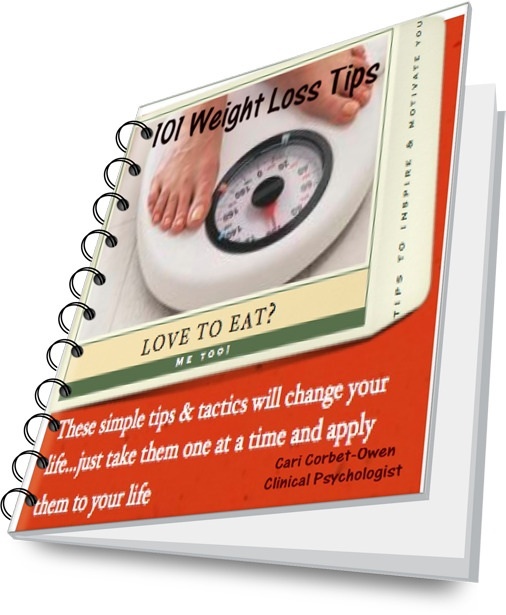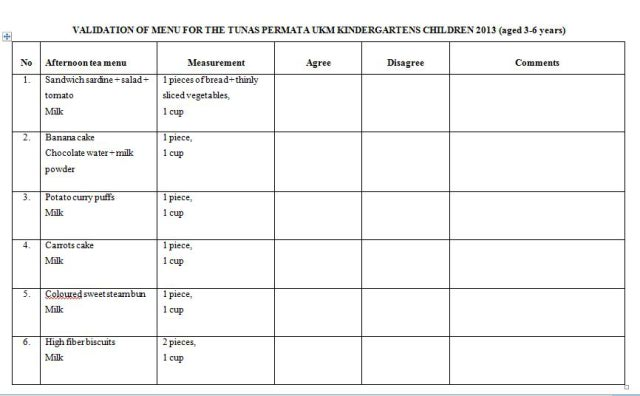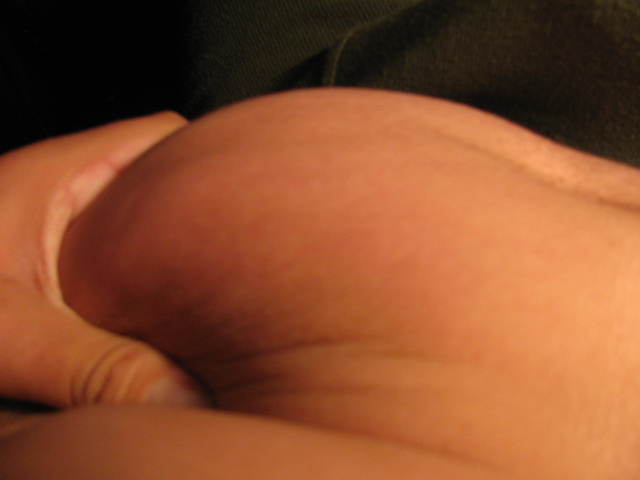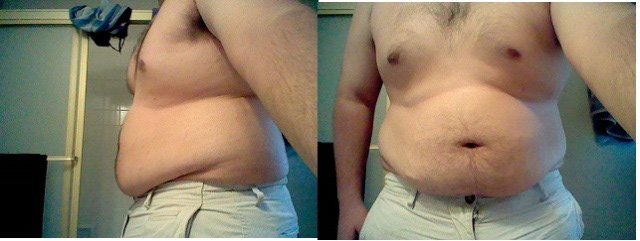Target weight?
Question
Hi
I am a 50 year old guy, 5'8", 240 pounds. I am naturally stocky plus used to lift weights so I have a fair bit of muscle under the fat!
I have been told I dont look that fat for my weight-I can barely pinch an inch-I think its mostly visceral fat as its mostly on my midsection. So, body fat calipers, etc. might not work for me.
I am on a diet and exercise program and slowly losing weight, but I would like a target weight to shoot for.
The height and weight charts say I should weigh 150 pounds which is unrealistic for me-I weighed that when I was a 18 before I got into working out!
Any help appreciated!
I love your question! In fact, so much so, that I practically wrote a book with the answer.
First, I抣l get specific about you. You said you are a 50 year old guy, 5'8", weigh 240 pounds (which is more than what the charts say you should be) yet feel you don抰 look 揻at?for your weight.
You are possibly an example of why scale body weight is not always a correct determination of health or fitness. I抣l explain why a much better determination is body fat percentage. Or better yet, an assessment using several methods of assessing body composition.
I抣l go over some initial assessments I did for you then explain what they mean.
Based on the Body Mass Index (BMI) your current Body Mass Index is 36.5 kg/m2. A healthy range of 19-25. Over 30 can indicate obesity. Don抰 get upset Bud, keep reading).
The use of the Met Life tables is prevalent on the internet and the weights on the are incorrectly as an "ideal" range. However, the values are too large for short people, and wrong for tall people. They have no age modifiers, and the definition of frame size is too hard to understand. Such charts are not a good indication of ideal body weight for general health or for athletic performance. The Met Life tables suggest you should weigh 154-176. From what you mentioned, you feel this is unrealistically low for you. A better approach is to determine your body composition.
Body composition is a term is used to describe the different components that, when taken together, make up a person's body weight. The body is made up of a variety of different tissue types including lean tissues (muscle, bone, and organs), and fat tissue.
We don抰 want excess fat because excess fat puts a person at risk for several health problems ?including heart disease, diabetes and some forms of cancer.
So it抯 evaluating a person抯 body composition, the amount of fat tissue and lean tissue that is an important factor when evaluating health and risk factors for disease.
So, for you to get a more complete picture, I would suggest looking beyond just what the scale says.
There are several methods of assessing body composition. Body composition and health risk is most accurately assessed using a variety of methods including body weight measurements, body mass index, waist to hip ratios, waist measurement and body fat percentage. Use a total assessment to get a more accurate determination of your body composition.
One assessment measure is Body Mass Index. BMI defines the amount of body fat a person has in relationship to their weight and height and eliminates dependence on frame size. Body Mass Index (BMI) is an assessment generally used by health experts to determine if a person is underweight, overweight or within a healthy weight range.
Body Mass Index (BMI) is a quick, convenient way to determine if extra pounds mean a person is at a higher risk for health problems associated with overweight. However, the BMI does not take into consideration a person抯 body type or muscle mass. So, alone it isn抰 very reliable. If a person is very muscular, their BMI may be in the overweight range, but their risk for health problems may be low. A Body Mass Index between 19 and 25 is considered ideal. People with a BMI between 25 and 29.9 may be overweight and a BMI greater than 30 can indicate obesity.
So Bud, your BMI of 36.5 kg/m2 could look high because as you said you are 搒tocky? muscular or big boned.
Body weight measurements on a scale are what people are most familiar with. Typical body weight scales provide a measure of total weight, but don't determine the lean-to-fat ratio of that weight. Monitoring body weight alone can be very misleading, because a scale can't tell the difference between a pound of fat and a pound of muscle. So when evaluating body composition this can be deceptive.
For example, a lean muscular person such as a body builder or athlete can look as if they are overweight on the height and weight tables but be within the ideal range of body fat percentage. A person can be at a normal weight according to the height weight tables but still carry too much body fat because of inadequate muscle mass.
How much of a person抯 weight is actually body fat is one of the most significant factors in evaluating weight and health. There are several types of body fat tests that can be used to measure actual body fat content. These are skinfold thickness tests using calipers, hydrostatic (underwater weighing), bioelectrical impedance and a machine called a Bod Pod that uses air displacement.
I feel that hydrostatic and Bod Pod methods are most accurate for body fat testing. Look in your local phone book and see if you can find someone to do either of these types of testing for you. Once you know your number you can see where you are and determine a goal.
General Body Fat Percentage Categories from The American Council of Exercise:
Classification Women (% fat) Men (% fat)
Essential Fat 10-12% 2-4%
Athletes 14-20% 6-13%
Fitness 21-24% 14-17%
Acceptable 25-31% 18-25%
Obese 32% plus 25% plus
Experts not only rely on the amount but the location of body fat to determine if a person is at greater risk for disease. The presence of excess fat in the abdomen, out of proportion to total body fat, is a predictor of obesity related risk factors and mortality. Excess fat stored around the stomach and waist (apple shape) can indicate a higher risk for heart disease, high blood pressure, gall bladder disease, stroke, diabetes and some types of cancer. Fat that is stored below the waist around the hips and thighs (pear shape) seems to be less risky.
Abdominal fat storage may also be linked to genetics, excess caloric intake, and excess alcohol intake. There is also evidence that abdominal fat develops when a person is under long-term stress. The hormone cortisol is released during stress, and it seems that high levels of cortisol in the body tend to encourage central fat to accumulate.
Research in adults suggests that a waist to hip ratio of 1.0 or greater for men or 0.8 or greater for women is an indicator of increased risk.
An even better measure of greater risk than the waist to hip ratio is the waist circumference measurement. (According to the study U.S. government's 1998 Clinical Guidelines on the Identification, Evaluation, and Treatment of Overweight and Obesity in Adults.) A waist measurement greater than 40 inches for men and 35 inches for women is an indication of greater health risks. A waist circumference above 39 inches (100cm), regardless of gender, is a strong risk factor for insulin resistance.
If you are compelled at this point to see what yours is, go grab a soft tape measure. Measure at the level with your navel. Make sure it's not too tight and that it is parallel with the floor. Don't hold your breath while measuring it! And if it抯 higher than 40 inches, make it a goal to get it below that with healthy weight loss.
Healthy weight loss is achieved through lowering the percentage of your total body weight that is in the form of fat and replacing fat weight with muscle weight. So the weight you see on the scale might not change much but you are in fact healthier because you have replaced fat with muscle.
Let me give you an example of an actual male client that I reassessed yesterday.
We started training together in November 2009. In general he has been doing weight and conditioning training with me 2-3 times a week, following my meal plan and supplementation recommendations and doing cardio as directed by me several times a week.
In a little over nine months, he (only) lost 5.6 pounds on the scale. But based on body fat testing I determined that he lost 15.78 pounds of FAT and gained 9.47 pounds of MUSCLE.
That抯 the goal of a program. That抯 the measure of success. To lose fat plus gain muscle. Without the body fat testing we wouldn抰 have known that. Can you see how disappointed he would have been with his progress had we used the scale as the only measure of body composition and his success? 5.6 pounds loss for 9 months effort seems terrible. But he is indeed healthier because he lost 6.1% body fat, his body is slimmer (2?inches off his abdomen alone), his waist decreased from 41 to 38 inches, and he is stronger because of the muscle addition. Not to mention he says he looks better than he ever has, and at 52!
So, Bud, go get a professional to measure your body fat and your waist size. Use those numbers to 1) assess whether extra fat is putting you at health risk 2) set some body fat percentage goals rather than target weight goals 3) and help measure the success of your program.
Good luck to you!
Maria
Related Articles
-
protein supplements
QuestionHello, I would like to ask about the benefits of using a
-
facial swelling
QuestionHi, so last year i lost a lot of weight between January a
-
Deer Meat
QuestionBrief background: 1. My wife is excited about using deer
-
slim-fast diet
QuestionI would like your opinion on how good the slim-fast diet
-
17 year old and weight loss
QuestionHi My son recently lost 45lbs by mostly cutting out sugar
-
Young Adult Looking to Lose Weight
QuestionIm a 22 year old senior in college. I spent a large




